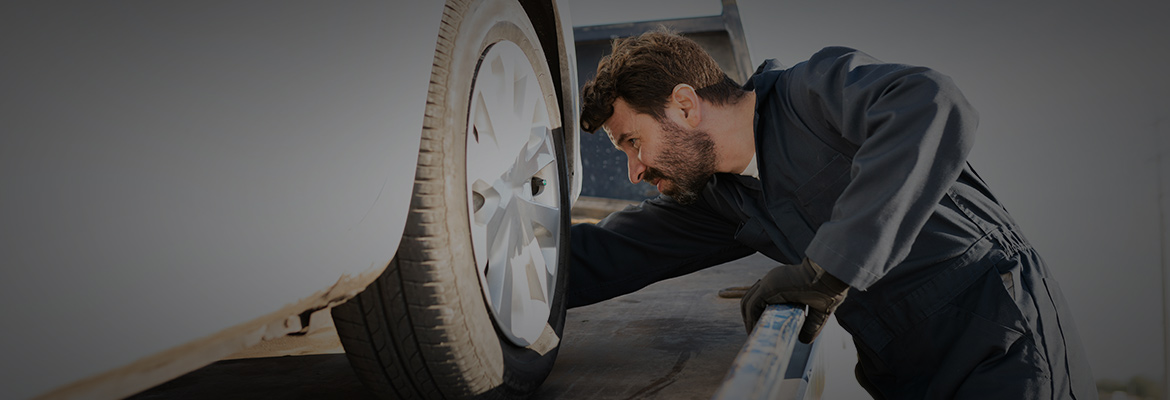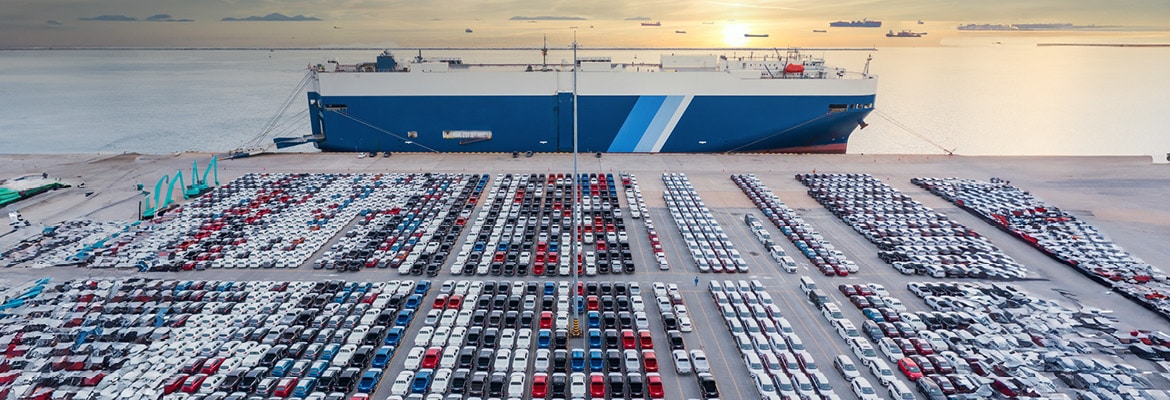Author(s)
admin
So you have to get your car from point A to point B. The first thing you’ll need to do is research your options. Driving it yourself can seem like the easiest and least expensive way to move your vehicle, but it may not really be the cheapest or easiest option — and it’s not an option when you also need to be behind the wheel of a moving truck.
Luckily, there are other ways to transport your car that won’t put the kind of wear and tear on it that a road trip will. Your first option is hiring an auto transport company to ship your car to its destination. The second option is to tow your car with a tow dolly or an auto transport trailer.
You should know that the safest way to get your car where it needs to go is to have it shipped by an experienced, reputable car transport company like Montway. It’s the only way to both avoid wear and tear on your vehicle and be certain it will get to its destination on time. But if this is the first time you’ve had to move your car from state to state, you’re probably still looking at all your options. In this post, we take a look at the most common ways to move a car and some of the pros and cons of each.
Tow dollies: Two wheels on the ground
A tow dolly is a two-wheel trailer that tows cars by securing the front wheels to a dolly and letting the rear wheels roll on the road. Whether or not your car can be towed with a tow dolly depends on the make and model, its weight and weight distribution, the length of your car, and its ground clearance. Most front wheel drive vehicles can be transported using a tow dolly, though your vehicle’s owner’s manual will have more information about what types of towing are and are not recommended.
So is a dolly a good option for your needs? Renting this type of trailer can be relatively inexpensive in the short term, though it’s important to consider the decrease in gas mileage that comes with pulling a second vehicle behind a truck. For very short trips, a tow dolly (and an auxiliary brake system) can be a good option, but they aren’t a great choice for long-distance transport because they still subject your car to a lot of wear and tear on the journey.
Flat towing: Four wheels on the ground
One alternative to two-wheel towing that’s popular with the RV crowd is flat towing. Also known as four down towing and dinghy towing, this type of transport involves attaching a tow bar to your car and pulling it behind your truck (or RV) with all four wheels on the ground. In the past, most cars could be towed in this way because they had manual transmissions. Even foldout wheel drive SUVs could be pulled four down. But today, front wheel drive and four-wheel drive vehicles with electronic transmissions make this type of towing more complicated.
Given how many other auto transport options there are available, it’s probably best to avoid flat towing your car. Wear and tear is just one consideration. If your vehicle is relatively new, chances are that your owner’s manual will recommend an auto transport trailer over four down towing. Before you go against those recommendations, consider this: some manufacturers will void a car’s warranty if they discover it has been transported by flat towing.
Auto transport trailers: No wheels on the ground
An auto transport trailer is a four-wheel trailer that can carry any vehicle that weighs less than about 5,000 pounds. Because the car is securely strapped to the trailer for the duration of the journey and won’t make contact with the road, both front and rear wheel drive vehicles, four-wheel drive vehicles, and new vehicles with electronic transmissions (or without a true neutral gear) can be moved on an auto transport trailer.
The advantages of this type of towing are that you won’t add mileage to your car, it won’t suffer wear and tear on its journey, and your vehicle becomes a cargo carrier because the only limit to what you can pack in there is weight.
Ready to transport your car with Montway?
Our car shipping advisors are available by calling (888) 666-8929 to answer all your questions.
The relative safety of towing a car
Towing a trailer can be safe, but there are risks. Depending on what kind of vehicle you’re using to tow your car, you may not be able to see your car or the trailer in your mirrors. Because some states don’t require auxiliary braking systems, the trailer you rent might not come equipped with its own brakes to compensate for the weight of your car. With a dolly, you won’t be able to go in reverse, and maneuvering while towing any type of auto trailer will be a challenge. If you accidentally swerve, you can damage both the trailer and the hitch. Load up incorrectly and the resultant trailer sway can cause a pretty bad accident.
Towing your car and the illusion of control
Road tripping with your car hitched securely behind your moving truck or another vehicle can seem like the best way to move it at first glance. That’s because your car stays with you for the entirety of its journey so you get to enjoy the feeling of control. And most people assume that towing a car will be less expensive than shipping a car, but when you factor in hotel stays, road food, frequent fill ups, the cost of renting a trailer or tow dolly (which can be almost as much as shipping), and the long-term effects of long-distance hauling, vehicle shipping costs can start to look very reasonable.
There are two very good reasons not to road trip with your car in tow. First, the large interstates that criss-cross the United States are some of the most dangerous roads in the country. When you’re not used to towing large cargo, that danger is magnified.
And second, it’s not easy! The vehicle trailer rental companies will try to convince you that towing your car is no big deal but it’s actually pretty complicated when you consider that you’ll probably be responsible for securing the trailer or dolly, securing your vehicle, and then navigating highways, small roads, and parking lots while towing a car.
Shipping your car: What you need to know
Shipping a car is by far the most common way to move a vehicle across the country. Some cars make the journey on an open flatbed or double-decker carriers, while others (usually more valuable or classic cars) ride in enclosed trailers to protect them from road debris and prying eyes. Open carriers do expose cars to the elements, but modern cars are made to live outside and open auto transport is typically much less expensive than shipping a car in an enclosed trailer. In both cases, a full cross-country move can take about two weeks.
The biggest advantages of using a reputable car transport company are that they handle all of the details, there is absolutely no wear and tear on your car, and the journey won’t add to your mileage. Unlike towing your car, shipping a car can be a stress-free, worry-free experience. Some will claim that the main downside to shipping a car is the cost, but just renting an auto trailer can actually cost almost as much as the full price of shipping your vehicle.
Choosing between car transport companies
Once you’ve decided to ship your car, you’ll need to choose a ship date and then an auto transport company. At first glance, most car transport companies will look pretty similar. Your initial impulse may be to let price be your guide, but remember that you get what you pay for. Choosing the cheapest auto transport company is risky!
Instead, look for car transport companies that offer the services that are important to you. Do you want to ship on an enclosed trailer? Do you need door to door service? Is being able to check in on your car’s location 24/7 important to you? Let those needs be your guide.
And finally, make sure that the company you choose is licensed, insured, and has a long history of successfully serving customers. Montway Auto Transport moves more than 200 vehicles each day while giving every customer individual attention so they have total peace of mind before, during, and after shipping.
Open vs. enclosed: The pros and cons
Whenever you’re transporting a car over long distances, enclosed transport will be the safest option. Inside a trailer, your vehicle will be protected from the elements, rocks kicked up by other cars on the road, birds, and curious or nefarious people.
But even given these pros, open transport on a car carrier or flatbed trailer is still a great choice – and a lot less expensive. Vehicles transported on open carriers make it to their destinations looking and driving just like they did when they were loaded up, so don’t feel like you need to spring for enclosed shipping to mitigate all possible risks to your car.
Here’s the bottom line: For cross-country moves, open-air transport is probably the safer choice when you’re comparing it to towing your car because carriers use experienced, professionally trained truck drivers to move vehicles. It’s definitely the less stressful option since you won’t have to deal with the logistics of securely attaching and loading a trailer and then navigating with the extra load. And finally, it can also be the less expensive option, given that renting a trailer is not at all cheap and towing a vehicle means burning through a lot more fuel.








